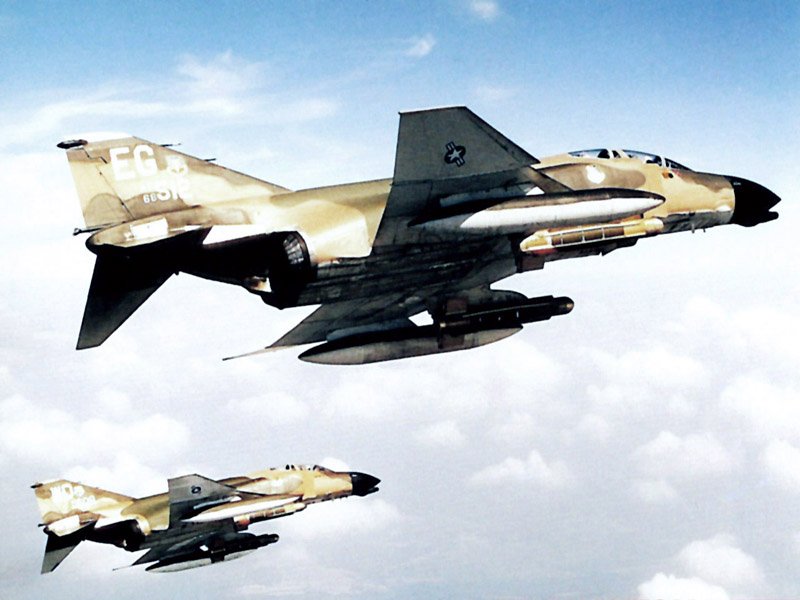McDonnell Douglas F-4 C/D PHANTOM II
As a result of the exceptional qualities of the F-4 Phantom II naval fighters, the USAF decided between 1961 and 1962 to evaluate this aircraft, which although it was designated for aircraft carrier operations, could be equally excellent in land-based operations. Thus, in January 1962 the USAF had lent two F-4B, (designated as F-110A Spectre), which it “faced” with all the USAF’s fighters in service. The Phantom II was the absolute winner in each and every one of the tests performed. Then, the USAF decided to make a huge order for aircrafts to be used mainly in the fighter-bomber role. This first variant for the USAF was designated as F-4C Phantom II. This aircraft was basically an F-4B with a “flying boom” refueling system, larger and lower pressure tyres, bigger brakes and new avionics according to the USAF’s needs. The first F-4C entered service at the beginning of 1964. In March 1966, the USAF put into service the F-4D variant, specifically created for air to ground attack missions, in which special attention was paid to the fact that the new aircraft could use a large range of weapons and have advanced avionics and electronics. A total of 583 F-4C and 825 F-4D were manufactured, and some dozens of units were exported. Spain received 36 ex-USAF F-4C, Iran obtained 32 new F-4Ds and South Korea had 36 ex-USAF F-4D.
F-4C/D PHANTOM II gallery and more info
